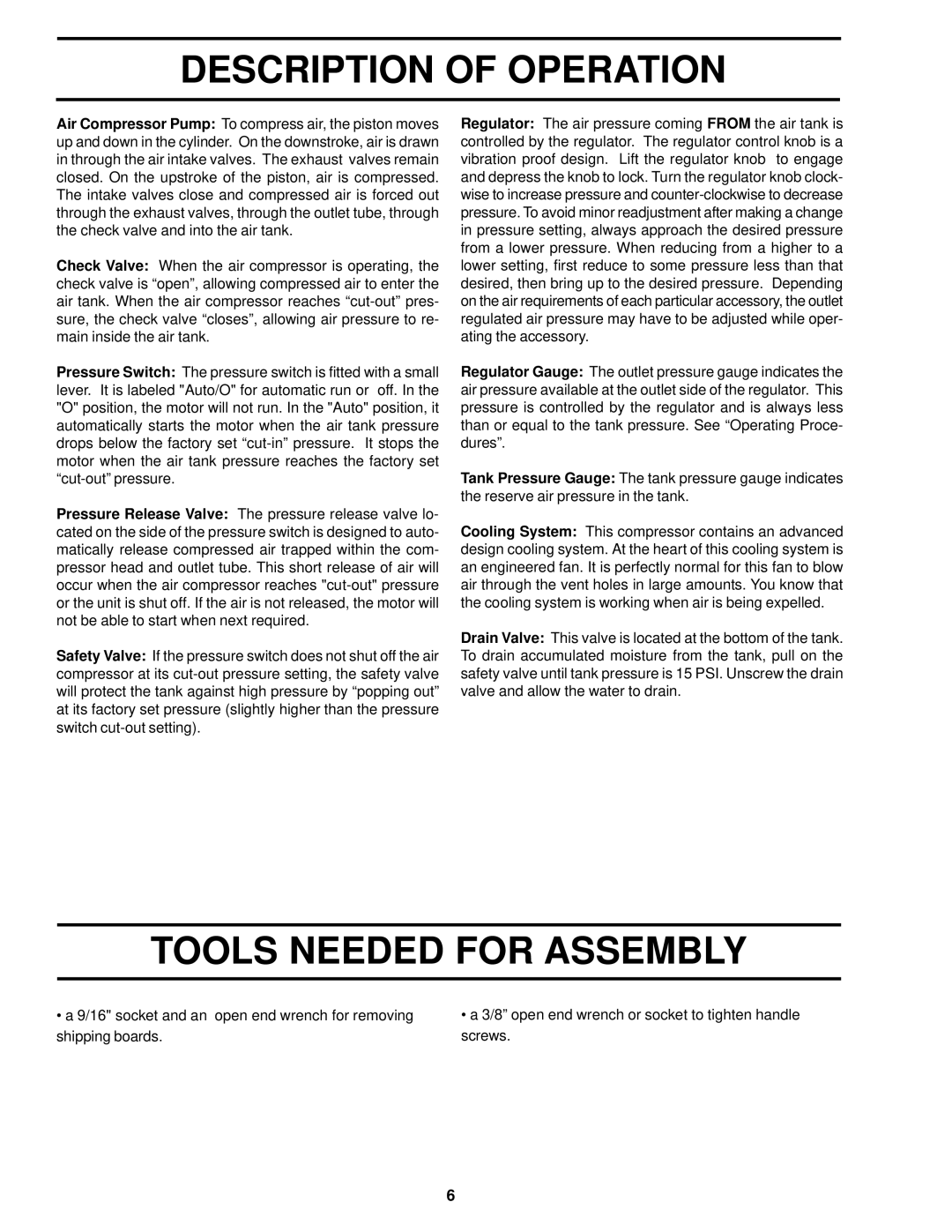
DESCRIPTION OF OPERATION
Air Compressor Pump: To compress air, the piston moves up and down in the cylinder. On the downstroke, air is drawn in through the air intake valves. The exhaust valves remain closed. On the upstroke of the piston, air is compressed. The intake valves close and compressed air is forced out through the exhaust valves, through the outlet tube, through the check valve and into the air tank.
Check Valve: When the air compressor is operating, the check valve is “open”, allowing compressed air to enter the air tank. When the air compressor reaches
Pressure Switch: The pressure switch is fitted with a small lever. It is labeled "Auto/O" for automatic run or off. In the "O" position, the motor will not run. In the "Auto" position, it automatically starts the motor when the air tank pressure drops below the factory set
Pressure Release Valve: The pressure release valve lo- cated on the side of the pressure switch is designed to auto- matically release compressed air trapped within the com- pressor head and outlet tube. This short release of air will occur when the air compressor reaches
Safety Valve: If the pressure switch does not shut off the air compressor at its
Regulator: The air pressure coming FROM the air tank is controlled by the regulator. The regulator control knob is a vibration proof design. Lift the regulator knob to engage and depress the knob to lock. Turn the regulator knob clock- wise to increase pressure and
Regulator Gauge: The outlet pressure gauge indicates the air pressure available at the outlet side of the regulator. This pressure is controlled by the regulator and is always less than or equal to the tank pressure. See “Operating Proce- dures”.
Tank Pressure Gauge: The tank pressure gauge indicates the reserve air pressure in the tank.
Cooling System: This compressor contains an advanced design cooling system. At the heart of this cooling system is an engineered fan. It is perfectly normal for this fan to blow air through the vent holes in large amounts. You know that the cooling system is working when air is being expelled.
Drain Valve: This valve is located at the bottom of the tank. To drain accumulated moisture from the tank, pull on the safety valve until tank pressure is 15 PSI. Unscrew the drain valve and allow the water to drain.
TOOLS NEEDED FOR ASSEMBLY
• a 9/16" socket and an open end wrench for removing | • a 3/8” open end wrench or socket to tighten handle |
shipping boards. | screws. |
6
